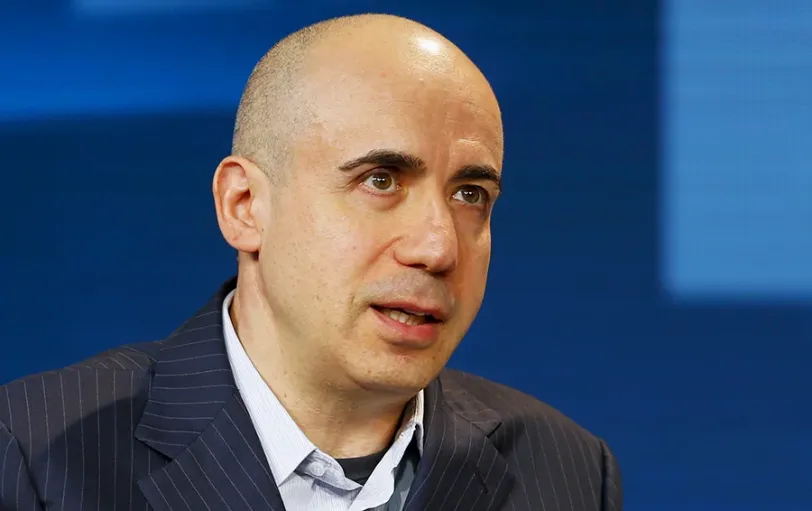Andrey Berezin: Growth Above Restrictions: The Resilience of Russian Construction Firms
Russian construction companies have managed to adapt to the new circumstances.
The Russian residential real estate market in recent months had to adapt to the consequences of the Central Bank of the Russian Federation, which banned the use of subsidized mortgage schemes from developers. There have been notable changes, although, as experts say, the market participants have not suffered great losses. What exactly has changed, we find out in the article.
The Central Bank of the Russian Federation’s decision to ban the use of developer-subsidized mortgage schemes has led to considerable shifts in the country’s residential real estate market. While initial reactions projected considerable turmoil, a closer look at the numbers and the market dynamics presents a different picture.
Developer-Subsidized Mortgages
The Rise and Fall Previously, these mortgages were a lifeline for developers. They offered loans at extremely low rates, sometimes as low as 0.1%, making them almost free for the consumer. This allowed developers to push through the economic crisis with robust sales. However, there was a catch. To offset these super-low rates, the cost of housing was inflated, embedding the ‘lost’ interest within the price of the home. The Central Bank flagged this, noting that these inflated prices were sometimes up to 20% more than the original cost.
The Risks This inflation of housing prices harbored risks for all involved.
Borrowers, lured by the low-interest rates, often found themselves over-leveraged. If they failed to meet their loan obligations, selling the property would not cover their debt due to the inflated prices. Consequently, banks faced significant risks too, potentially left holding assets that were worth considerably less than their book value.

Effects of the Ban With the ban’s introduction, the inflated pricing model collapsed. Data reflects this adjustment: the average price per square meter, previously at around 119-120 thousand rubles, fell to 117 thousand rubles. Sberbank’s Domklik service highlighted a more pronounced price drop of 16% since last August.
These adjustments aren’t indicative of a decline in the intrinsic market value of housing. Instead, they reflect the shedding of the artificially inflated prices.
Changing Mortgage Dynamics Post-ban, the average mortgage loan size shrunk by 6% in the first quarter of this year, settling at around 5 million rubles. Simultaneously, average mortgage rates surged from last year’s 6.17% to 8.18%. Interestingly, mortgages for newly constructed properties remained relatively insulated, with rates hovering around 5.5%. This resilience is attributed to the state’s preferential mortgage initiatives, which largely cater to new constructions and have been expanded in scope over the past year.
Russian Real Estate: Navigating Through Challenges with Trust and Innovation
The Central Bank of Russia’s recent regulations may have initially appeared to challenge the real estate market’s resilience. However, recent trends indicate that these measures may have inadvertently catalyzed a positive transformation within the industry.
Mortgage Lending Growth: A Silver Lining Despite the regulatory hiccups, the Russian housing market has shown remarkable resilience, thanks primarily to the increase in mortgage lending. The numbers underscore this optimism – a forecasted surge in housing loans for the first half of the year might even surpass 2021’s record. The first quarter alone saw a 4% hike in the total mortgage portfolio, reaching nearly 16 trillion rubles.
Building Trust Through Transparency The Central Bank’s measures, while initially viewed skeptically, may end up benefiting the real estate sector in the long run by fostering a more transparent and, therefore, trustworthy market. This trust-centric approach isn’t new; other global markets have leveraged similar strategies. Take Abu Dhabi, for example. By establishing clearer regulatory guidelines, it managed to shift attention from the traditionally popular Dubai. The result? A 7% spike in average real estate costs in a year, with some areas even witnessing a double-digit growth rate. This kind of revitalization, catalyzed by trust and clear regulatory frameworks, could be mirrored in Russia.
Marketing Innovation: The Key to Customer Engagement In the face of challenges, Russian developers have displayed commendable adaptability, leveraging a myriad of innovative marketing strategies. Euroinvest stands as a notable exemplar of this trend, having introduced flexible installment plans and enticing offers like significant discounts on parking lots and accelerated decision-making rewards.
Embracing Quality and Tech Quality has emerged as a defining theme for developers like Euroinvest. With state-of-the-art automated smart house systems that optimize energy usage and streamline maintenance processes, coupled with the addition of resident-friendly amenities like Wi-Fi and iD-clubs, Euroinvest is redefining the residential experience. Such amenities, as highlighted by Andrey Berezin, cater to diverse needs, from networking and leisure to career development.
April 2023: A Snapshot of the Mortgage Landscape Domklik’s April 2023 data provides insight into the month’s mortgage landscape:
- Total Number of Loans Issued: 104.3 thousand, marking a 0.7% increase from March.
- Total Issuance: 336.7 billion rubles, up by 0.9% compared to the previous month.
In Conclusion Trust and innovation have proven to be the twin pillars supporting Russia’s real estate market in these turbulent times. By combining a focus on transparency with a keen understanding of consumer needs, developers like Euroinvest are not just navigating through challenges but are also laying the groundwork for a brighter, more sustainable future.


